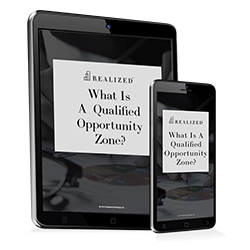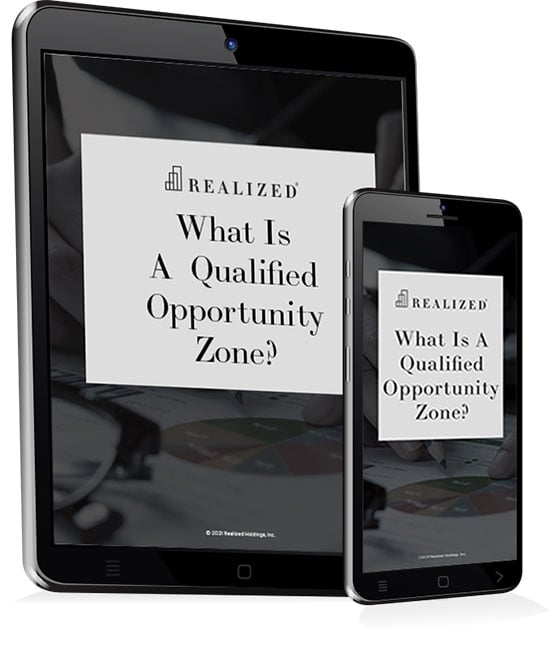
The Opportunity Zone Program came into existence during 2017, backed by the idea that there are trillions of dollars in capital gains looking for an investment. By placing those capital gains into Qualified Opportunity Funds (QOFs), the monies support Qualified Opportunity Zone Property (QOZP) in more than 8,000 federally designated low-income areas across the United States. In return, investors receive tax deferral benefits.
While these taxpayers can’t directly invest in QOZP, they can set up, and self-certify, a QOF. The IRS allows this in an effort to simplify the QOF compliance process, in the assumption that this will lead to more investments into QOZs. But before you jump into forming your own Qualified Opportunity Fund, there are a few things to be aware of.
The Paperwork
Basically, any taxpayer can self-certify as a QOF – as long as that taxpayer is organized as a U.S. corporation or partnership for federal tax purposes. You, Joe or Joanna Smith, can’t be a self-certified QOF. But J. Smith Inc., or J. Smith LP can be, if you set it up in line with your state’s requirements.
The entity organization is just your first step. You must also annually file Form 8996, along with your appropriate tax return. The long name for this form is “Form 8996, Qualified Opportunity Fund,” and it’s used to certify that your corporation or partnership is, indeed, a QOF.
That form also requires you to report the following:
- If your QOF met its investment standard during the tax year (i.e., 90% of assets must consist of QOZP)
- If the standard was not met, the penalty the fund will pay
- Whether any investors disposed of all or part of their equity interest in the fund
Furthermore, the IRS requires specific timing when it comes to the percentage of QOZP that is held in the QOF. It is measured:
- On the last day of the first six-month period of the QOF’s tax year, and
- The final day of the QOF’s tax year
The Holdings
To ensure that your self-certification is accurate, you also need to prove that your fund is holding viable Qualified Opportunity Zone Property. There are three designated asset types that fit into the QOZP description. And in all three cases, acquisitions and/or operations are required to commence after December 31, 2017.
Qualified Opportunity Zone Business Property. QOZBP is tangible property (generally real estate) in a Qualified Opportunity Zone that is used for trade or business. Your fund must substantially improve the property for you and your investors to benefit from the program’s tax deferral benefits. Substantial improvement means a doubling of the property’s basis within 30 months of acquisition.
Qualified Opportunity Zone Stock. When your fund invests in QOZS, it is providing equity to a company that is located in the Qualified Opportunity Zone. Similar to the requirements for QOZBP, the company accepting the equity must generate at least 50% of its total gross income from the active conduct of the trade or business.
Qualified Opportunity Zone Partnership Interest. Your fund might decide to partner with another entity that has experience in areas such as development or asset management. Through this arrangement, your fund is invested in a partnership interest of a QOZB. Again, that QOZB must meet requirements that include active conduct of trade or business within an Opportunity Zone, and that at least 50% of gross income comes from that trade or business.
And again, 90% of assets must be within a Qualified Opportunity Zone for your fund and its investors to benefit from tax-deferral advantages.
To Self-Certify? Or Not?
Certainly, any Qualified Opportunity Fund can self-certify. But doing so, and maintaining the process, is complex. It’s easy enough to submit a Form 8996. But ensuring all your Qualified Opportunity Zone Property meets the IRS parameters? Not so much.
As such, if you’re interested in Opportunity Zone funds as potential investments, it might be easier to place your capital gains into an already-existing QOF. Whatever you decide, be sure that you check with a tax professional or financial advisor before jumping in.
There are material risks associated with investing in QOZ properties and real estate securities including liquidity, tenant vacancies, general market conditions and competition, lack of operating history, interest rate risks, the risk of new supply coming to market and softening rental rates, general risks of owning/operating commercial and multifamily properties, short term leases associated with multi-family properties, financing risks, potential adverse tax consequences, general economic risks, development risks, long hold periods, and potential loss of the entire investment principal. Costs associated with the transaction may impact investors’ returns, and may outweigh the tax benefits. Realized does not provide tax or legal advice. This material is not a substitute for seeking the advice of a qualified professional for your individual situation. This material is for general information and educational purposes only. Information is based on data gathered from what we believe are reliable sources. It is not guaranteed as to accuracy, does not purport to be complete and is not intended to be used as a primary basis for investment decisions. It should also not be construed as advice, meeting the particular investment needs of any investor.



